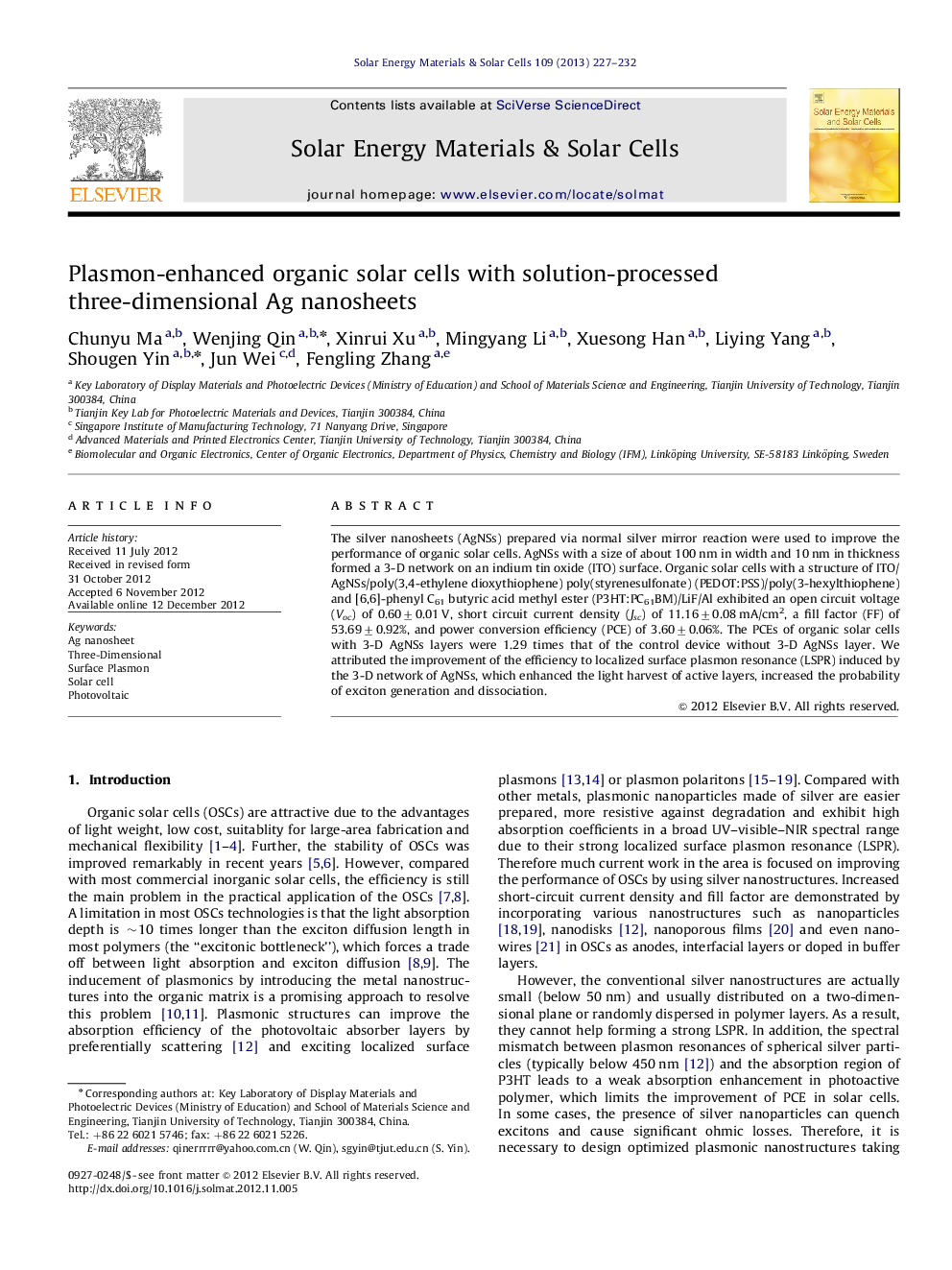| Article ID | Journal | Published Year | Pages | File Type |
|---|---|---|---|---|
| 78438 | Solar Energy Materials and Solar Cells | 2013 | 6 Pages |
The silver nanosheets (AgNSs) prepared via normal silver mirror reaction were used to improve the performance of organic solar cells. AgNSs with a size of about 100 nm in width and 10 nm in thickness formed a 3-D network on an indium tin oxide (ITO) surface. Organic solar cells with a structure of ITO/AgNSs/poly(3,4-ethylene dioxythiophene) poly(styrenesulfonate) (PEDOT:PSS)/poly(3-hexylthiophene) and [6,6]-phenyl C61 butyric acid methyl ester (P3HT:PC61BM)/LiF/Al exhibited an open circuit voltage (Voc) of 0.60±0.01 V, short circuit current density (Jsc) of 11.16±0.08 mA/cm2, a fill factor (FF) of 53.69±0.92%, and power conversion efficiency (PCE) of 3.60±0.06%. The PCEs of organic solar cells with 3-D AgNSs layers were 1.29 times that of the control device without 3-D AgNSs layer. We attributed the improvement of the efficiency to localized surface plasmon resonance (LSPR) induced by the 3-D network of AgNSs, which enhanced the light harvest of active layers, increased the probability of exciton generation and dissociation.
Graphical abstractFigure optionsDownload full-size imageDownload as PowerPoint slideHighlights► 3-D Ag nanosheets were incorporated in the organic solar cells for the first time. ► 3-D Ag nanosheets exhibit strong SPP effect. ► Reaction time influences the morphology of Ag nanosheets and the performance of solar cells. ► 3-D Ag nanosheets increased PCE dramatically compared to aggregated nanoparticles.
